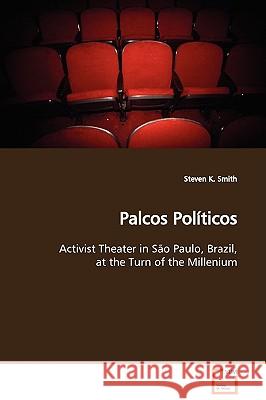Palcos Políticos » książka
Palcos Políticos
ISBN-13: 9783639117462 / Angielski / Miękka / 2009 / 204 str.
Sao Paulo, Brazil, boasts one of the most dynamic theater scenes in the world. While it is generally agreed that an engaged, activist theater once existed there, it is widely held that meaningful, sociopolitically engaged dramatic production ceased with the end of the military dictatorship in 1985. This book contends that activist theater is in fact thriving and that recent years have seen significant growth in dynamic, engage theater in Sao Paulo. After laying out a theoretical framework, this book examines how two of the greatest names in activist theater, Augusto Boal and Bertolt Brecht, interact and how they fit into the broader context of theater history. Chapters two and three examine two specific activist theater troupes in depth: Folias d'Arte and Teatro Uniao e Olho Vivo, the latter more established and working in poor peripheral neighborhoods and the former relatively new and centered in the bustling center of South America's largest metropolis. Chapter four offers a more panoramic view of the current state of the overall contemporary activist theater scene in Sao Paulo, clearly showing that sociopolitically engaged theater is alive and well in that city.
São Paulo, Brazil, boasts one of the most dynamictheater scenes in the world. While it is generallyagreed that an engaged, activist theater once existedthere, it is widely held that meaningful,sociopolitically engaged dramatic production ceasedwith the end of the military dictatorship in 1985.This book contends that activist theater is in factthriving and that recent years have seen significantgrowth in dynamic, engagé theater in São Paulo. Afterlaying out a theoretical framework, this bookexamines how two of the greatest names in activisttheater, Augusto Boal and Bertolt Brecht, interactand how they fit into the broader context of theaterhistory. Chapters two and three examine two specificactivist theater troupes in depth: Folias dArte andTeatro União e Olho Vivo, the latter more establishedand working in poor peripheral neighborhoods and theformer relatively new and centered in the bustlingcenter of South Americas largest metropolis. Chapterfour offers a more panoramic view of the currentstate of the overall contemporary activist theaterscene in São Paulo, clearly showing thatsociopolitically engaged theater is alive and well inthat city.











